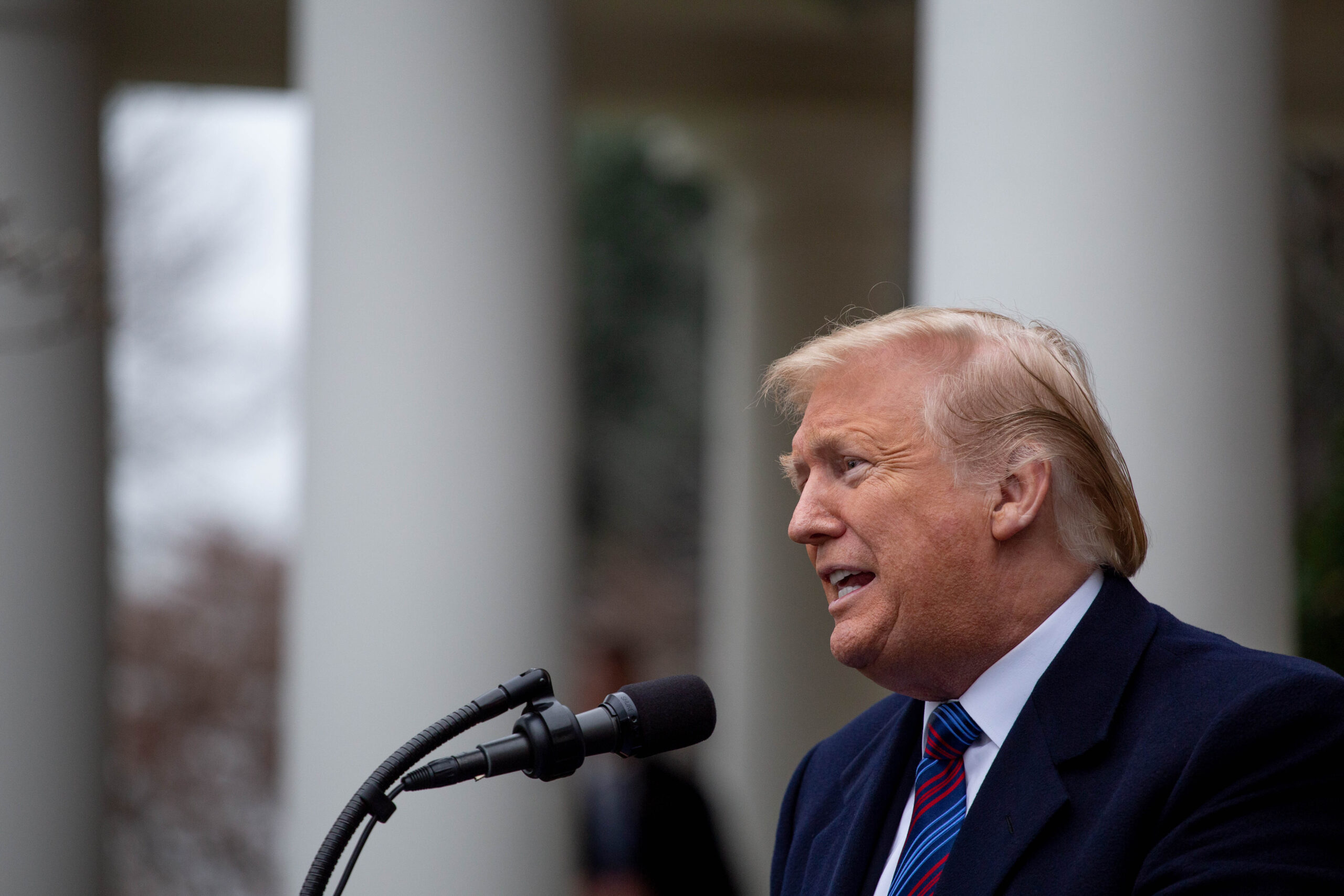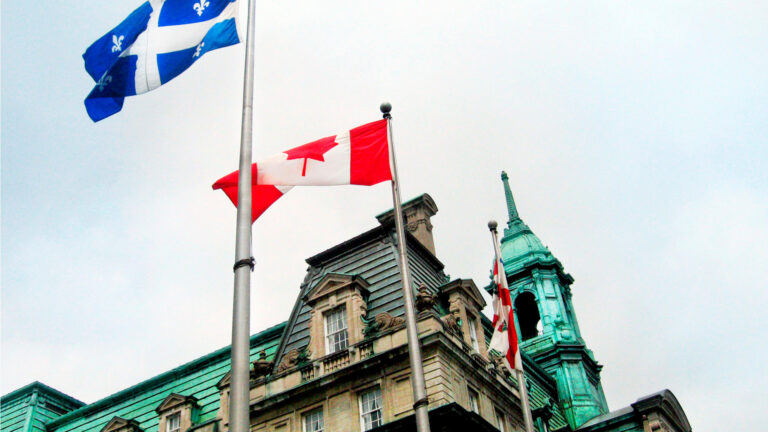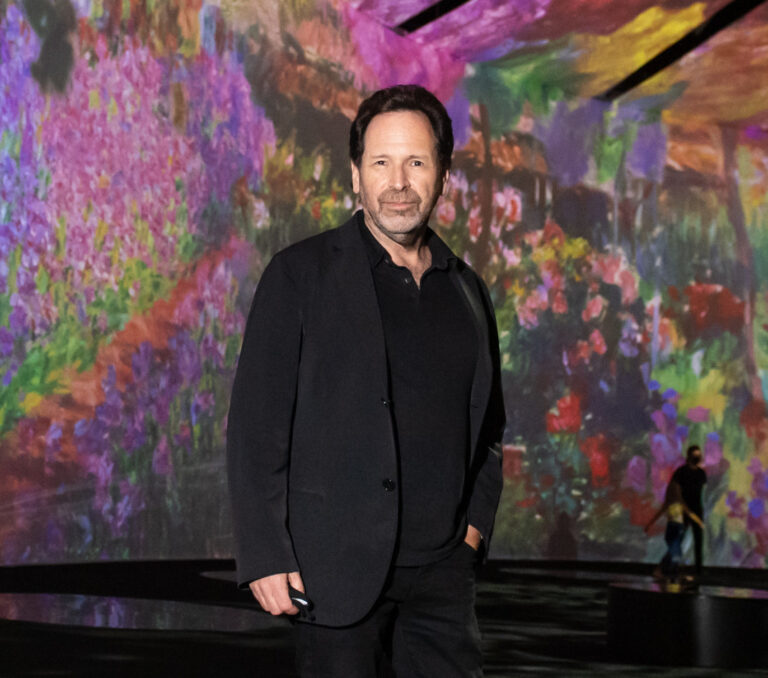(This article has been translated into French.)
On March 22, 2020, former Obama White House chief of staff and former Chicago mayor Rahm Emanuel argued during an interview on ABC’s This Week that elected officials in the United States should “never allow a crisis to go to waste” in light of COVID-19.
While Emanuel may not have been talking about political campaigns, there’s no doubt political strategists on both sides of the border have been watching the events of the pandemic transpire as an opportunity to capitalize on their political situation. This is particularly true if they are heading into a political race or if they are facing sluggish levels of public approval.
Politicians can act by bolstering facets of their public identity valued by the public or by tweaking aspects of their identity that are less appreciated. In some cases, politicians can use these moments to attack their opponents as well as reboot their political communication approach and roll out a revised public political image.
In an era where non-stop political campaigning is a staple feature in many countries, moments of crisis represent a unique opportunity for politicians to redefine how they are perceived by the public. Crises can be viewed as unpredictable – and sometimes unprecedented – occurrences or events that are disrupting the day-to-day operations of an entity, whether it is a country or a private organization. They can ultimately threaten the wellbeing and, in some cases, survival of the entity and its members.
Public crises are generally characterized by heightened levels of uncertainty, insecurity and, in some cases, emotional distress and anxiety among the public. They can also be marked by mass media organizations devoting a lot of time and resources to the coverage of their source and their effects.
Public crises require politicians to take a strong stance and act swiftly to minimize and contain harm as well as protect the public. As noted by Olivier Turbide, public image-making can be viewed as one of the tools used by politicians engaging in crisis communication.
In Canada, the COVID-19 health emergency has given Prime Minister Justin Trudeau the ability to regain control of the political narrative and reframe his public image and leadership, especially as he and his party faced numerous challenges during the months preceding the crisis.
Among them include a tough re-election contest during the fall months of 2019 and a nationwide, Indigenous-led protest movement in early 2020. For most of the COVID-19 emergency, Trudeau has served as the public face and incarnation of the government’s response by holding almost daily news conferences from the front of his residence.
He has also deployed members of his government to address specific facets of the crisis. By adopting a firm yet empathetic tone as well as rolling out often personal and targeted outreach and engagement initiatives on and offline, Trudeau has positioned himself and his government as compassionate leaders in control of the situation.
It should be noted that in the early days of the crisis, the Liberal government’s communication efforts were headed by members of Trudeau’s team. Deputy Prime Minister Chrystia Freeland and Health Minister Patty Hadju as well as Chief Public Health Officer Theresa Tam provided updates to the Canadian public and took questions from journalists as Trudeau was self-isolating due to his wife’s positive COVID-19 test. As Trudeau has moved to the centre of the crisis response stage, they have still been playing an important role in the government’s virus-related communication activities.
Despite some criticism, polling data suggests that their performance has so far been well received by Canadians. More importantly, this represents a significant shift from the largely negative public perception of the Liberals’ handling of the gas pipeline crisis earlier in 2020.
Following protest initiatives in support of members of the Wet’suwet’en Indigenous nation who opposed a natural gas pipeline in British Columbia in February 2020, Trudeau failed to control the crisis, assert his leadership and find a solution in a timely manner to ease tensions that impacted different facets of the Canadian society.
Despite being in charge of the province with the most COVID-19 cases and deaths in Canada, Quebec Premier François Legault’s Coalition Avenir Québec (CAQ) government has also benefited from the crisis. According to a recent Angus Reid poll, the public approval levels of its handling of the crisis have steadily increased over the month of March 2020 to reach 93 percent in late March 2020.
Unlike Trudeau, Legault has opted for a more team-based crisis communication effort. For the most part, he has replicated the strategy used by the Parti Québécois to tackle the 1998 ice storm, which marked Quebecers and lies deep in the collective memory.
Flanked by Quebec’s Director of Public Health, Horacio Arruda, and Health Minister Danielle McCann, Legault holds a weekday news conference where he shares updates on the state of his government’s response to the COVID-19 and takes questions from journalists.
A clear emphasis is given to members of his team who are presented as specialists in different areas of the crisis response. Particularly, Arruda has garnered a significant online following for a variety of reasons, including his enthusiasm and his personality, which is on full display during the press conferences.
Legault has also taken several steps to affirm the credibility of his leadership, including by showing high levels of transparency and by taking responsibility for some of the failings of his government during the crisis. While his communication strategy has enabled him to reach large swaths of Quebec society, his crisis message might have failed to convince many narrower segments of the public, namely minority religious, linguistic, and cultural communities.
Indeed, high rates of infection in the Montreal and Laval boroughs – which are among the most diverse in the province of Quebec – seem to show that they might have not been exposed to and heeded the government’s guidelines. Furthermore, the last weeks of April have been marked by growing confusion in the crisis communication response of the Legault government, such as with the messaging related to the reopening of schools.
It is a much different story in the United States. While most governors have adopted a more governance-focused response to the COVID-19 health emergency, the US president has taken a different approach.

Most Democratic and Republican governors – including Michigan governor Gretchen Whitmer and Massachusetts governor Charlie Baker – have focused on providing their constituents with almost day-to-day updates on the state of the health crisis and on their actions in response to it. In some cases, some governors, including Illinois governor Jay Robert Pritzker, have given speeches and media interviews in an attempt to shock the federal government into taking steps to support their crisis mitigation efforts. For the most part, governors have received praise from the public.
Meanwhile, US President Donald Trump has opted for an approach designed to mobilize and bolster his levels of support among his electoral base. While he has benefited from a “rally-’round-the-flag” effect in the polls in the early days of the crisis, his public support has been steadily eroding throughout the month of April 2020.
His crisis communication strategy has been essentially driven by a desire to emphasize the significance of his actions in response to the crisis as well as assigning the responsibility to or blaming others for the shortfalls in the crisis response, including the World Health Organization (WHO), immigrants, China, as well US governors.
The US government’s crisis communication efforts mirror some of the language of Trump’s campaign organization, including “Opening Up America Again,” which resembles “Make America Great Again.” Some analyses also suggest that his daily COVID-19 press briefings have progressively turned into campaign rallies. In sum, Trump has opted to use the crisis to reinforce and – in some ways – bolster his existing public image ahead of the 2020 presidential election.
What are the key takeaways from the handling of the COVID-19 crisis by politicians in North America? In Canada and Quebec, Trudeau and Legault’s political communication crisis strategies borrow from “good practices in crisis communication.” By controlling the crisis narrative, they have been able to frame the COVID-19 situation in ways beneficial to their public image.
While offering the public a data-driven message, they have also been able to infuse empathy and personality in their messaging. Specifically, Trudeau has kept his unifying and inclusive communication style by using expressions such as “our government” more than “I will” in his messaging. Meanwhile, Legault has been able to rise above the fray. He has kept his populist communication style. He has used a more personal tone and relied on the first person when sharing government decisions. In sum, while Trudeau and Legault have opted for different approaches, especially as their responsibilities are different, they have both been successful so far.
In the United States, governors have been facing different challenges. While Trump and his team have kept a highly populist and, in many respects, negative and confrontational communication style geared towards the upcoming 2020 presidential campaign, the governors’ messaging has focused on convincing the public of the importance of key policies related to the crisis, including stay-at-home advisories or orders as well as social distancing measures.
From a broader perspective, while leaders in North America have used the COVID-19 crisis in different ways for political communication and image-making purposes, it will be of interest to see how they move forward as the crisis winds down and more normal politics resumes.
This article is part of the The Coronavirus Pandemic: Canada’s Response special feature.
Photo: Prime Minister Justin Trudeau arrives for his daily news conference on the COVID-19 pandemic outside his residence at Rideau Cottage in Ottawa, on May 3, 2020. THE CANADIAN PRESS/Justin Tang










